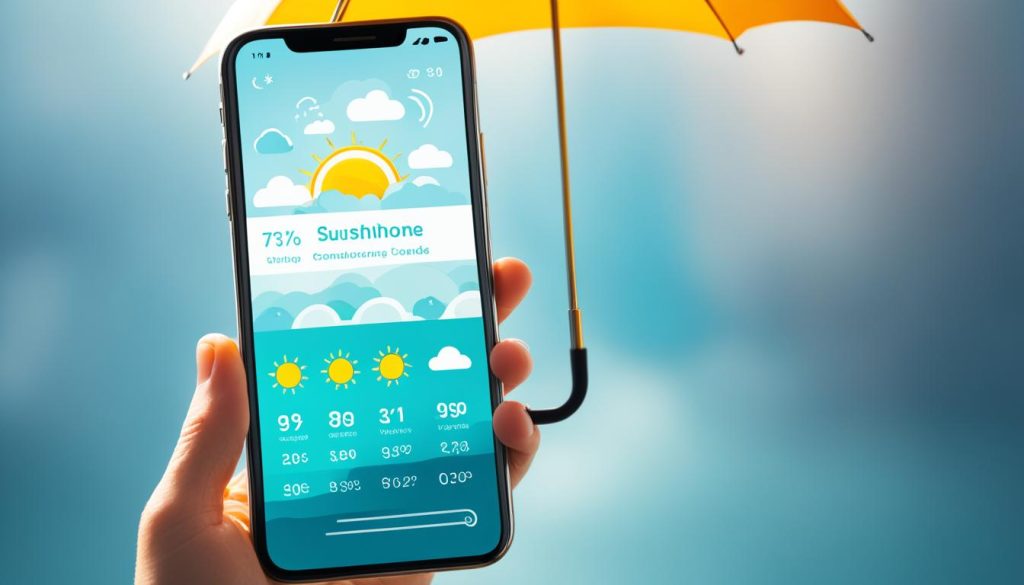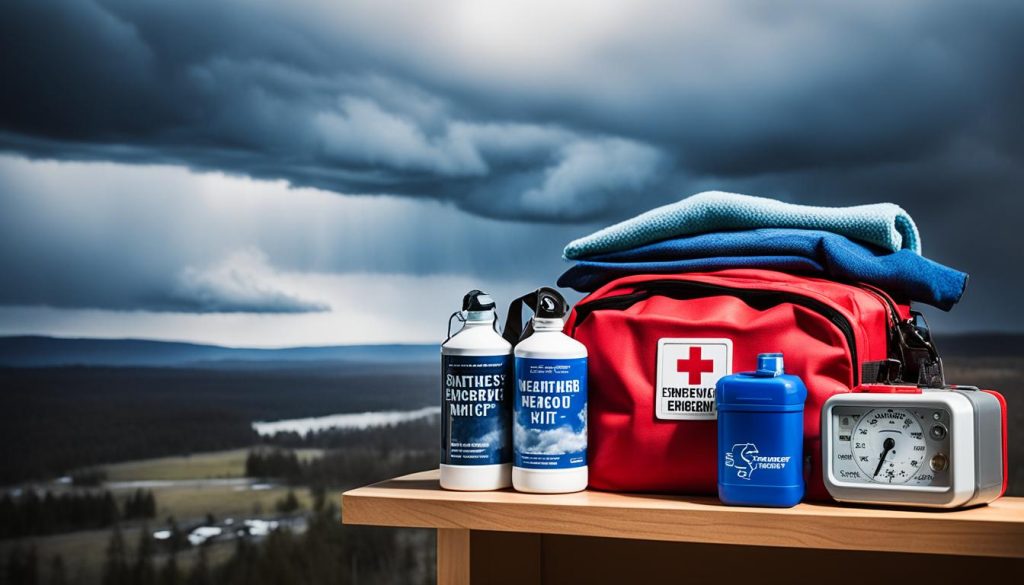Weather forecasting is an essential tool for staying prepared and making informed decisions about your daily activities. By regularly checking the weather forecast, you can anticipate and plan for different weather conditions, allowing you to stay safe and comfortable. This section will provide tips on how to effectively check the weather forecast and develop a plan to stay prepared.
Understanding meteorology and atmospheric conditions is crucial for interpreting weather forecasts accurately. The climate in your area can also play a significant role in determining the reliability and accuracy of these forecasts. By staying informed about the latest weather trends and patterns, you can make more informed decisions about how to prepare for and respond to changing weather conditions.
Developing a plan to stay prepared for various weather conditions is key to ensuring your safety and well-being. This may include creating an emergency kit with essential supplies, such as non-perishable food, water, and first-aid items, as well as a family communication plan in case of severe weather events.
Understanding Weather Forecasts
Accurately interpreting weather forecasts is crucial for staying prepared and making informed decisions about your daily activities. Weather forecasts provide valuable insights into the expected atmospheric conditions, helping individuals and communities anticipate and plan for changes in the climate. In this section, we will explore the key components of a weather forecast and the factors that can influence its accuracy.
At the core of a weather forecast are the various meteorological data points collected from weather stations, satellites, and other monitoring systems. These data points, including temperature, humidity, wind speed and direction, precipitation, and atmospheric pressure, are analyzed by weather experts to predict the likely weather patterns in a given area. By understanding how these different elements interact and influence each other, forecasters can provide more reliable and informative forecasts.
- Understanding Temperature Trends: The forecast’s temperature predictions can help you plan for the appropriate clothing and activities, ensuring your comfort and safety in different weather conditions.
- Anticipating Precipitation: Knowing the likelihood and intensity of rain, snow, or other forms of precipitation can help you prepare for potential flooding, icy roads, or the need for protective gear.
- Monitoring Wind Conditions: Wind speed and direction can impact outdoor activities, transportation, and even energy production. Staying informed about the weather forecast’s wind predictions can help you make informed decisions.
- Tracking Atmospheric Pressure: Changes in atmospheric pressure can indicate the arrival of high-pressure or low-pressure systems, which can lead to significant shifts in weather patterns.
While weather forecasts strive to provide accurate predictions, it’s important to recognize that the atmospheric conditions are inherently complex and can be influenced by a variety of factors, such as local geography, global climate patterns, and unexpected weather events. By understanding the limitations and uncertainties associated with weather forecasting, individuals can make informed decisions and adjust their plans accordingly.

Preparing for Weather Conditions
Once you’ve reviewed the weather forecast and understood the potential atmospheric conditions, the next crucial step is to prepare for those climate challenges. This section will provide you with guidance on creating an emergency kit and developing a family emergency plan to ensure your safety and well-being in the face of unpredictable meteorology.
Building an emergency kit is an essential part of being prepared for any weather event. Start by gathering essential items like non-perishable food, water, batteries, flashlights, and a first-aid kit. Additionally, consider including items like warm clothing, blankets, and basic tools to help you weather any storm. Remember to regularly check and update your emergency kit to ensure it remains stocked and ready for use.
Alongside your emergency kit, it’s equally important to develop a comprehensive family emergency plan. This should include communication strategies, designated meeting locations, and evacuation procedures tailored to the specific forecast and potential weather conditions in your area. Ensure that all family members are informed and understand their roles and responsibilities in the event of an emergency.

By taking these proactive steps to prepare for weather conditions, you and your family will be better equipped to respond effectively and remain safe during unpredictable meteorology events. Investing time in building an emergency kit and planning ahead can make all the difference when it comes to weathering any climate challenge that may arise.
Importance of Weather Awareness
Maintaining a strong awareness of weather patterns and forecasts is crucial for staying safe and prepared. Understanding the climate, meteorological conditions, and potential atmospheric changes can provide numerous benefits that can help you and your loved ones navigate through various weather situations with confidence and resilience.
One of the primary reasons why weather awareness is so important is that it allows you to anticipate and plan for potential weather conditions. By closely monitoring forecasts, you can make informed decisions about your daily activities, ensuring that you are prepared for any changes in the weather. This proactive approach can help you avoid unexpected disruptions, minimize risks, and enhance your overall safety and well-being.
Furthermore, being weather-aware can also help you make more informed decisions about long-term planning and preparedness. By understanding the climate and meteorological trends in your area, you can take appropriate measures to safeguard your home, property, and community against potential weather-related emergencies or disasters. This level of weather awareness can be invaluable in ensuring the resilience and well-being of your community.
Whether you’re planning a trip, making decisions about your daily activities, or preparing for potential weather-related emergencies, maintaining a strong awareness of weather patterns and forecasts can be a game-changer. By staying informed and taking proactive steps, you can enhance your safety, improve your quality of life, and contribute to the overall resilience of your community in the face of changing weather conditions.
Conclusion
As we conclude this exploration of weather forecasting and preparedness, it’s clear that maintaining a vigilant approach to monitoring weather, climate, and atmospheric conditions is essential for individuals, families, and communities. By regularly checking the weather forecast and understanding the nuances of meteorology, we can make informed decisions and take proactive steps to stay safe and resilient in the face of changing weather patterns.
The key to weathering any storm, whether it’s a sudden downpour or a prolonged heat wave, lies in our ability to anticipate the conditions and plan accordingly. By creating emergency kits, developing family emergency plans, and staying attuned to the latest weather updates, we can ensure that we are prepared to face the challenges posed by unpredictable atmospheric conditions.
As we move forward, let us embrace the importance of weather awareness and continue to educate ourselves and our communities on the critical role that weather forecasting plays in our daily lives. By staying informed and taking the necessary precautions, we can navigate the ever-changing climate with confidence and resilience, ensuring the safety and well-being of all.
FAQ
What are the key components of a weather forecast?
Weather forecasts typically include information on temperature, precipitation, wind speed and direction, humidity, and atmospheric pressure. Meteorologists use a variety of data sources, including weather stations, satellites, and computer models, to develop these forecasts.
How can I stay prepared for changing weather conditions?
To stay prepared for changing weather conditions, it’s important to create an emergency kit with essential supplies, develop a family emergency plan, and stay informed about weather patterns and forecasts in your area. This can help you anticipate and respond to various weather events, such as storms, extreme temperatures, or natural disasters.
Why is weather awareness important?
Maintaining a strong awareness of weather patterns and forecasts is crucial for ensuring your safety and well-being. By staying informed about the weather, you can make informed decisions about your daily activities, plan ahead for potential weather events, and take the necessary precautions to protect yourself and your loved ones.
How can I improve the accuracy of weather forecasts?
While weather forecasting has become more accurate in recent years, there are still limitations and uncertainties involved. Factors such as the complexity of atmospheric systems, data availability, and computational power can affect the accuracy of weather forecasts. Meteorologists are continuously working to improve their models and data collection methods to provide more reliable and precise forecasts.
What should I include in my emergency kit for weather-related events?
An essential emergency kit for weather-related events should include items such as bottled water, non-perishable food, flashlights, batteries, a first-aid kit, a battery-powered radio, and any necessary medications. It’s also a good idea to have emergency contact information, copies of important documents, and a plan for where to go in the event of an emergency.






